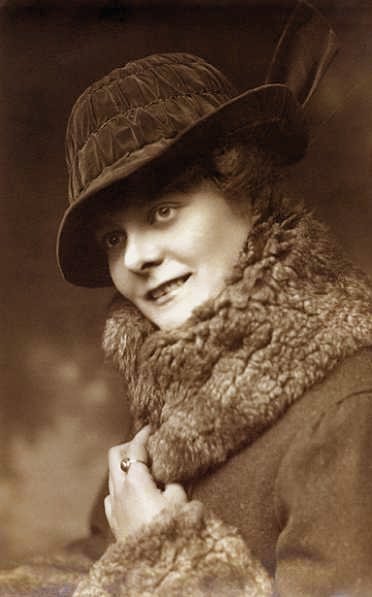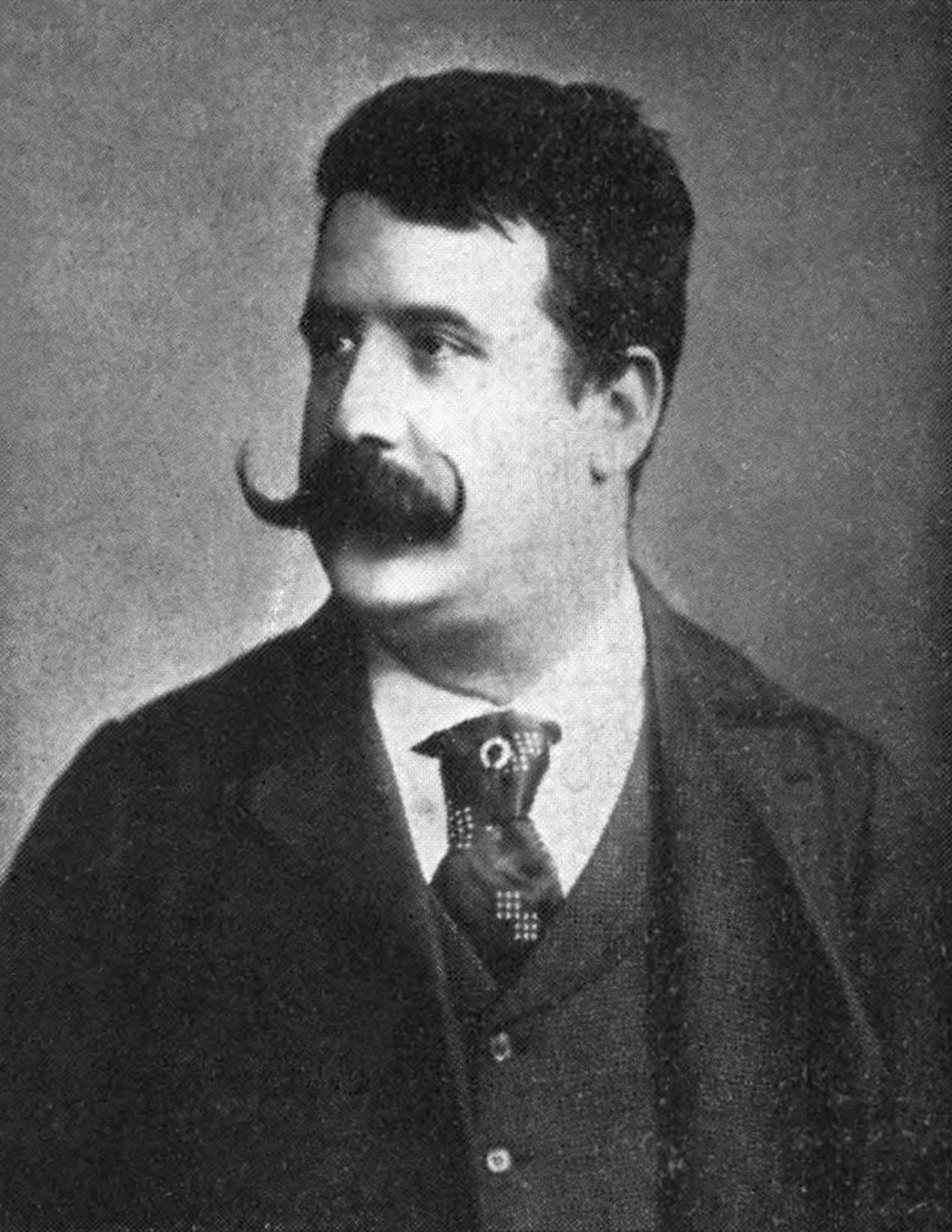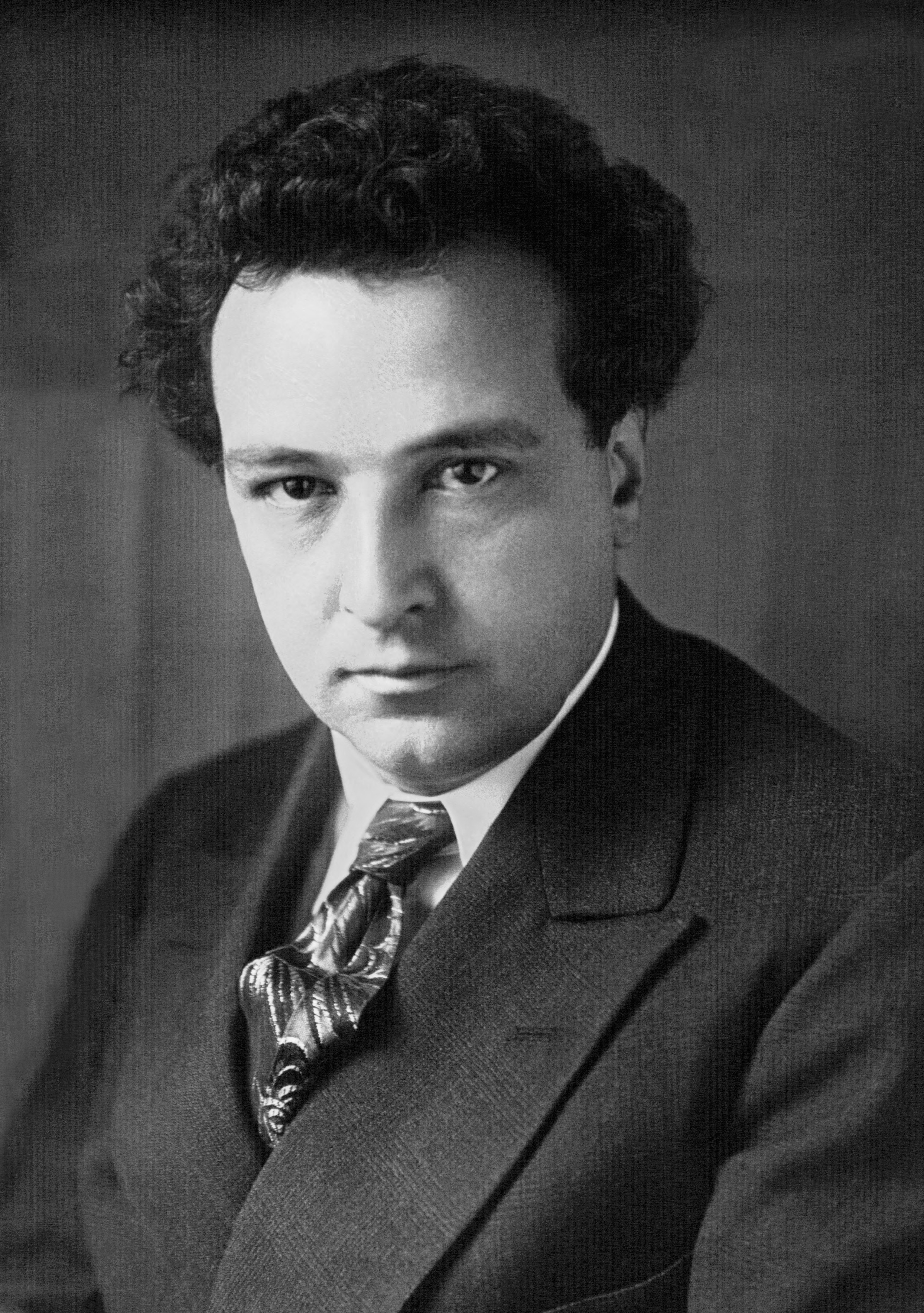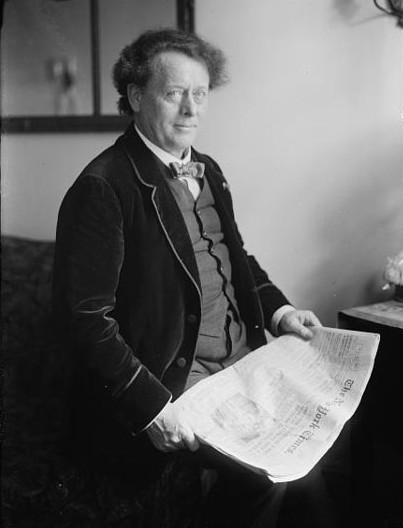|
Lydia Kindermann
Lydia Kindermann (1892–1953) was a Polish mezzo-soprano opera singer who from 1917 sang principally in the opera houses of Graz, Stuttgart, Cologne, Berlin and Prague. As a Jew, fearing the rise of Nazism, she emigrated to Argentina in 1938 where she soon became a star of the Teatro Colón in Buenos Aires and acquired Argentine citizenship. She is remembered in particular for her Wagnerian roles, including Ortrud in ''Lohengrin'', Erda and Waltraute in the ''Ring Cycle'' and Magdalene in the ''Meistersinger''. In the 1940s, she also performed in Chile and Uruguay. She returned to Austria in 1949 where she appeared in a recital in Innsbrück and taught voice in Vienna. Biography Born on 21 September 1892 in Łódź, Russian Empire (now in Poland), Lydia Kindermann was a German speaker of Jewish descent. She made her debut in 1917 at the Stadttheater (city theatre) in Teplitz, Austria-Hungary. From 1917, she performed in Graz, Austria, after which she was engaged by the Stuttgart ... [...More Info...] [...Related Items...] OR: [Wikipedia] [Google] [Baidu] |
Kindermann Portrait
Kindermann is a German surname. Notable people with the surname include: *August Kindermann (1817–1891), German bass-baritone *Balthasar Kindermann (1636–1706), German poet *Franz Kindermann, German merchant *Heinz Kindermann (born 1942), German politician *Johann Erasmus Kindermann (1616–1655), German composer *Lydia Kindermann (1892–1953), Polish opera singer Sport * Sociedade Esportiva Kindermann, women's football club in Brazil See also *Kinderman Kinderman is a surname. Notable people with the surname include: * Keith Kinderman (1940–2018), American football player * Peter Kinderman (born 1965), British psychologist *William Kinderman William Andrew Kinderman (born 1 November 1952) is ... {{surname German-language surnames ... [...More Info...] [...Related Items...] OR: [Wikipedia] [Google] [Baidu] |
Staatsoper Stuttgart
The Staatsoper Stuttgart (Stuttgart State Opera) is a German opera company based in Stuttgart, the capital of Baden-Württemberg, Germany. The Staatsorchester Stuttgart serves as its resident orchestra. History Performances of operas, ballet and plays in Stuttgart took place from the 17th century at the hall of . The probably first opera production was in 1660 the singspiel ''Der Raub der Proserpina'' by Hofkapellmeister Samuel Capricornus. Four years later, a permanent stage was established. In 1750, the building was remodeled as Stuttgart's opera house, named ''Königliches Hoftheater'' (Royal Court Theatre) in 1811. It burnt down in 1902, and opera was performed in a provisional ''Interimstheater''. Today's opera house was built from 1909 to 1912 by architect Max Littmann from Munich, with two halls, ''Großes Haus'' and ''Kleines Haus''. After the end of the monarchy in 1918, the theatres were named ''Württembergische Landestheater''. The ''Kleines Haus'', site of the wor ... [...More Info...] [...Related Items...] OR: [Wikipedia] [Google] [Baidu] |
Faust (opera)
''Faust'' is a grand opera in five acts by Charles Gounod to a French libretto by Jules Barbier and Michel Carré from Carré's play ''Faust et Marguerite'', in turn loosely based on Johann Wolfgang von Goethe's '' Faust, Part One''. It debuted at the Théâtre Lyrique on the Boulevard du Temple in Paris on 19 March 1859, with influential sets designed by Charles-Antoine Cambon and Joseph Thierry, Jean Émile Daran, Édouard Desplechin, and Philippe Chaperon. Performance history The original version of Faust employed spoken dialogue, and it was in this form that the work was first performed. The manager of the Théâtre Lyrique, Léon Carvalho cast his wife Caroline Miolan-Carvalho as Marguerite and there were various changes during production, including the removal and contraction of several numbers. The tenor Hector Gruyer was originally cast as Faust but was found to be inadequate during rehearsals, being eventually replaced by a principal of the Opéra-Comique, Jose ... [...More Info...] [...Related Items...] OR: [Wikipedia] [Google] [Baidu] |
Gounod
Charles-François Gounod (; ; 17 June 181818 October 1893), usually known as Charles Gounod, was a French composer. He wrote twelve operas, of which the most popular has always been ''Faust (opera), Faust'' (1859); his ''Roméo et Juliette'' (1867) also remains in the international repertory. He composed a large amount of church music, many songs, and popular short pieces including his "Ave Maria (Bach/Gounod), Ave Maria" (an elaboration of a Johann Sebastian Bach, Bach piece) and "Funeral March of a Marionette". Born in Paris into an artistic and musical family, Gounod was a student at the Conservatoire de Paris and won France's most prestigious musical prize, the Prix de Rome. His studies took him to Italy, Austria and then Prussia, where he met Felix Mendelssohn, whose advocacy of the music of Bach was an early influence on him. He was deeply religious, and after his return to Paris, he briefly considered becoming a priest. He composed prolifically, writing church music, songs ... [...More Info...] [...Related Items...] OR: [Wikipedia] [Google] [Baidu] |
Verdi
Giuseppe Fortunino Francesco Verdi ( ; ; 9 or 10 October 1813 – 27 January 1901) was an Italian composer best known for his operas. He was born near Busseto, a small town in the province of Parma, to a family of moderate means, receiving a musical education with the help of a local patron, Antonio Barezzi. Verdi came to dominate the Italian opera scene after the era of Gioachino Rossini, Vincenzo Bellini, and Gaetano Donizetti, whose works significantly influenced him. In his early operas, Verdi demonstrated sympathy with the Risorgimento movement which sought the unification of Italy. He also served briefly as an elected politician. The chorus " Va, pensiero" from his early opera ''Nabucco'' (1842), and similar choruses in later operas, were much in the spirit of the unification movement, and the composer himself became esteemed as a representative of these ideals. An intensely private person, Verdi did not seek to ingratiate himself with popular movements. As he bec ... [...More Info...] [...Related Items...] OR: [Wikipedia] [Google] [Baidu] |
Die Frau Ohne Schatten
' (''The Woman without a Shadow''), Op. 65, is an opera in three acts by Richard Strauss with a libretto by his long-time collaborator, the poet Hugo von Hofmannsthal. It was written between 1911 and either 1915 or 1917. When it premiered at the Vienna State Opera on 10 October 1919, critics and audiences were unenthusiastic. Many cited problems with Hofmannsthal's complicated and heavily symbolic libretto. However, it is now a standard part of the operatic repertoire. Composition history Work on the opera began in 1911. Hofmannsthal's earliest sketches for the libretto are based on a piece from Johann Wolfgang von Goethe, Goethe's collection ' (1795). Hofmannsthal handles Goethe's material freely, adding the idea of two couples, the emperor and empress who come from another realm, and the dyer and his wife who belong to the ordinary world. Hofmannsthal also drew on portions of ''One Thousand and One Nights, The Arabian Nights'', ''Grimms' Fairy Tales'', and even quotes Goethe's ... [...More Info...] [...Related Items...] OR: [Wikipedia] [Google] [Baidu] |
Richard Strauss
Richard Georg Strauss (; ; 11 June 1864 – 8 September 1949) was a German composer and conductor best known for his Tone poems (Strauss), tone poems and List of operas by Richard Strauss, operas. Considered a leading composer of the late Romantic and early Modernism (music), modern eras, he has been described as a successor of Richard Wagner and Franz Liszt. Along with Gustav Mahler, he represents the late flowering of German Romanticism, in which pioneering subtleties of orchestration are combined with an advanced harmony, harmonic style. Strauss's compositional output began in 1870 when he was just six years old and lasted until his death nearly eighty years later. His first tone poem to achieve wide acclaim was ''Don Juan (Strauss), Don Juan'', and this was followed by other lauded works of this kind, including ''Death and Transfiguration'', ''Till Eulenspiegel's Merry Pranks'', ''Also sprach Zarathustra'', ''Don Quixote (Strauss), Don Quixote'', ''Ein Heldenleben'', ''Symph ... [...More Info...] [...Related Items...] OR: [Wikipedia] [Google] [Baidu] |
Ruggero Leoncavallo
Ruggero (or Ruggiero) Leoncavallo (23 April 18579 August 1919) was an Italian opera composer and librettist. Throughout his career, Leoncavallo produced numerous operas and songs but it is his 1892 opera ''Pagliacci'' that remained his lasting contribution, despite attempts to escape the shadow of his greatest success. Today ''Pagliacci'' continues to be his most famous opera and one of the most popular and frequently performed works in the operatic repertory. His other notable compositions include the song " Mattinata", popularized by Enrico Caruso, and, to a lesser extent, his version of ''La bohème'' which, however, was overshadowed by Puccini's highly successful opera of the same name. Biography The son of Vincenzo Leoncavallo, a police magistrate and judge, Leoncavallo was born in Naples, Kingdom of the Two Sicilies, on 23 April 1857. As a child, Leoncavallo moved with his father to the town of Montalto Uffugo in Calabria, where he lived during his adolescence. In 1868 ... [...More Info...] [...Related Items...] OR: [Wikipedia] [Google] [Baidu] |
Arthur Honegger
Arthur Honegger (; 10 March 1892 – 27 November 1955) was a Swiss-French composer who was born in France and lived a large part of his life in Paris. Honegger was a member of Les Six. For Halbreich, '' Jeanne d'Arc au bûcher'' is "more even than '' Le Roi David'' or '' Pacific 231'', his most universally popular work". Biography Born Oscar-Arthur Honegger (the first name was never used) to Swiss parents in Le Havre, France, he initially studied harmony with Robert-Charles Martin (to whom he dedicated his first published work) and violin in Le Havre. He then moved to Switzerland, where he spent two years (September 1909 – June 1911) at the Zurich Conservatory being taught by Lothar Kempter and Friedrich Hegar. In 1911, he enrolled in the Paris Conservatoire from 1911 to 1918 (except for a brief period during the winter of 1914–1915, when he was mobilised in Switzerland), studying with Charles-Marie Widor, Lucien Capet, André Gédalge and Vincent d'Indy. Gédal ... [...More Info...] [...Related Items...] OR: [Wikipedia] [Google] [Baidu] |
Willem Mengelberg
Joseph Wilhelm Mengelberg (28 March 1871 – 21 March 1951) was a Dutch conductor, famous for his performances of Beethoven, Brahms, Mahler and Strauss with the Concertgebouw Orchestra in Amsterdam. He is widely regarded as one of the greatest symphonic conductors of the 20th century. Biography Mengelberg was the fourth of fifteen children of German-born parents in Utrecht, Netherlands. His father was the Dutch-German sculptor Friedrich Wilhelm Mengelberg. He was a distant cousin of the musicologist and composer and the uncle of the conductor, composer and critic Karel Mengelberg, who was himself the father of the pianist and composer Misha Mengelberg. After studies in Utrecht with the composer and conductor Richard Hol, the composer Anton Averkamp (1861–1934) and the violinist Henri Wilhelm Petri (1856–1914), Mengelberg went on to study piano and composition at the Cologne conservatory (now the Hochschule für Musik Köln), where his principal teachers were Franz ... [...More Info...] [...Related Items...] OR: [Wikipedia] [Google] [Baidu] |
Concertgebouw, Amsterdam
The Royal Concertgebouw (, ) is a concert hall in Amsterdam, Netherlands. The Dutch term "concertgebouw" translates into English as "concert building". Its superb Architectural acoustics, acoustics place it among the finest concert halls in the world, along with Boston's Symphony Hall, Boston, Symphony Hall and the Musikverein in Vienna. In celebration of the building's 125th anniversary, Beatrix of the Netherlands, Queen Beatrix bestowed the royal title "Koninklijk" upon the building on 11 April 2013, as she had on the Royal Concertgebouw Orchestra upon its 100th in 1988. History The architect of the building was , who was inspired by the Gewandhaus in Leipzig, built two years earlier (and destroyed in 1943). Construction began in 1883 in a pasture that was then outside the city, in Nieuwer-Amstel, a municipality that in 1964 became Amstelveen. A total of 2,186 wooden piles, 12 to 13 metres (40 to 43 ft) long, were emplaced in the soil. The Concertgebouw was completed in ... [...More Info...] [...Related Items...] OR: [Wikipedia] [Google] [Baidu] |







